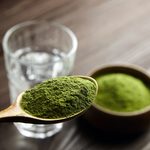Learn to Love Veggies
Vegetables come in a huge variety of colours and textures. Given the sheer bounty of these natural foods, how do you decide which to eat? A good starting point is to understand how they can benefit your body.
Picking the Right Veggies
The first thing to do is to vote with your taste buds and eat produce you like. If you tend to eat only one veggie, such as green beans, though, try to vary your routine. This will help ensure that you get all the nutrients you need. A serving of broccoli may have dozens of powerhouse nutrients-but not necessarily the same ones as a serving of asparagus. You may even gain a bonus in the weight-loss battle by varying your veggies: Studies suggest that people who eat a variety of foods, especially vegetables, tend to consume less fat and are less likely to be overweight than people stuck in dietary ruts.
Start by first choosing veggies with star nutritional power. As a rule of thumb, vivid colors-dark greens and bright reds or yellows-signal that a vegetable is packed with vitamins, minerals, and other vital nutrients. Here are some of the healthiest choices:
Asparagus
Just 1 cup of asparagus packs a whopping 4 grams of fibre. It also has plenty of B vitamins, vitamin C, and folate. Tip: Use asparagus spears within two days of purchase because they lose their vitamin C quickly. Steam the spears and then sprinkle with lemon juice or ginger-flavoured soy sauce for extra flavour. Or try roasting them in the oven with a little olive oil. Delicious! Make instant asparagus soup by pureeing cooked asparagus, heating it with a little milk, and adding chopped parsley or tarragon.
Bell Peppers
Whether red, yellow, or green, peppers are full of B vitamins and vitamin C. Red peppers also contain beta-carotene, which the body converts to vitamin A, a nutrient that helps protect the eyes. Tip: With their large lobes and airy interiors, peppers are perfect for stuffing, but you’ll need to clean out the seeds, which can be bitter. To do it, use a sharp knife to cut a circle around the stem, then lift it out, along with the interior membranes that hold the seeds. Rinse the inside of the pepper to wash out any stragglers.
Broccoli
This cruciferous vegetable is often touted as the king of vegetables. It’s loaded with vitamins A and C as well as other antioxidants (compounds that help guard against cancer and heart disease, among other things), and it even contains calcium, which may help lower high blood pressure. Tip: Overcooking can degrade some of broccoli’s nutrients, so steam florets lightly, shorten cooking time in the microwave, or quickly stir-fry them in a small amount of olive oil. To eat them almost raw but cooked enough to soften them up, blanch broccoli spears in boiling water for about 3 minutes.
Brussels Sprouts
These little cabbage-like nodes are rich in vitamin C. They’re also an excellent source of lutein, an antioxidant that may reduce the risk of developing cataracts. Tip: The stems are tougher than the leaves, so cut an “X” across the base of each sprout before steaming to allow heat inside the core to soften it. The sprouts will cook evenly for consistent tenderness. For the mildest taste, choose frozen baby brussels sprouts. For the best flavour, cook them lightly so they’re still a little crisp.
Cauliflower
The dense florets of a cauliflower head are great sources of B vitamins, which help the body metabolize glucose. Tip: Some recipes call for serving a head of cooked cauliflower intact, but when it’s broken or cut into florets, it will heat faster, so more nutrients are preserved. Faster cooking also holds back cauliflower’s pungent odor, which intensifies the longer you heat it.
Leafy Greens
Greens such as spinach, Swiss chard, bok choy, collards, and mustard greens are some of the few plant sources of zinc, a mineral that protects insulin-producing beta cells in the pancreas. Zinc is lost in the urine when blood sugar is too high. These greens are also rich sources of calcium and magnesium-minerals that have been shown to decrease the risk of diabetes-not to mention antioxidants that protect your eyes and your heart. Tip: Spinach leaves tend to attract grit. Before cooking or serving, place them in a bowl of cool water or in the sink. Swish them gently to remove the grit, then drain and repeat if necessary. To dry the leaves, give them a whirl in a salad spinner.



